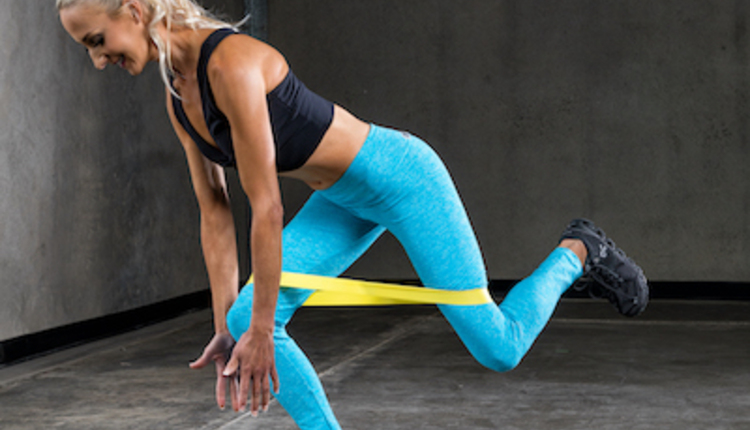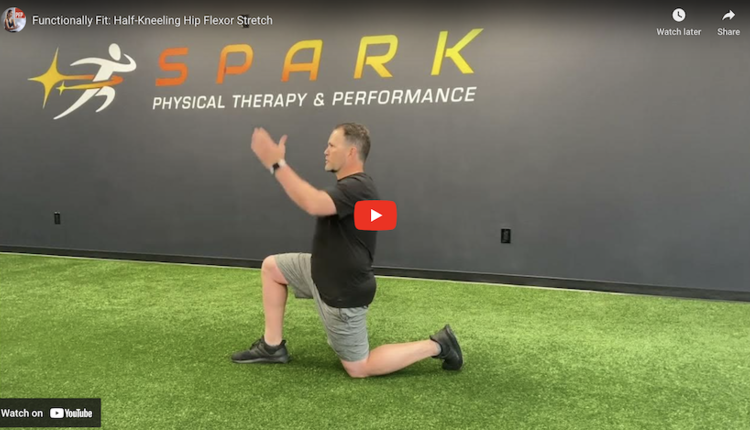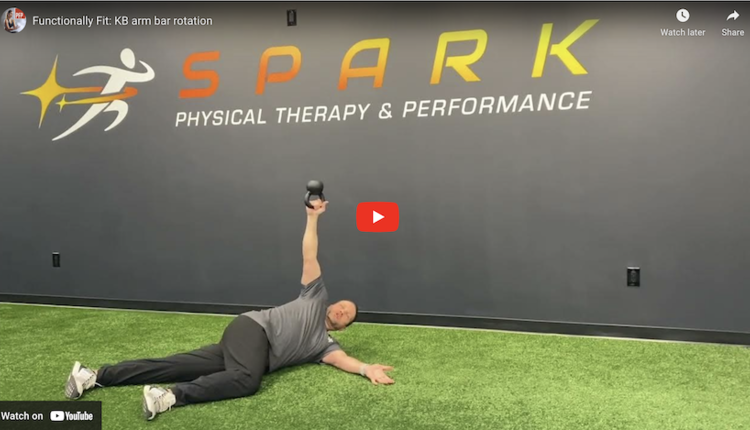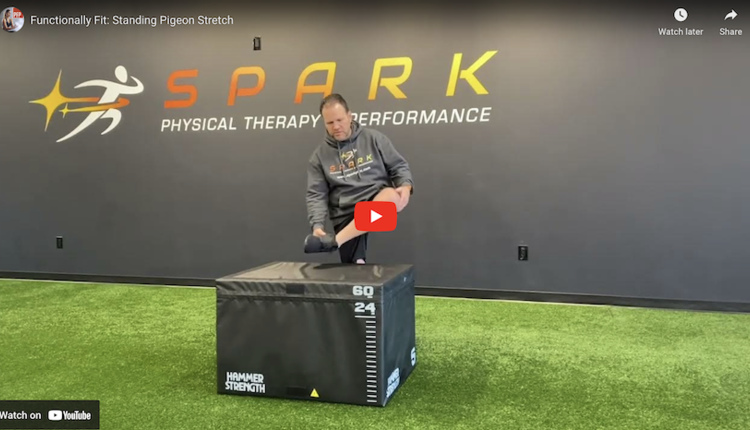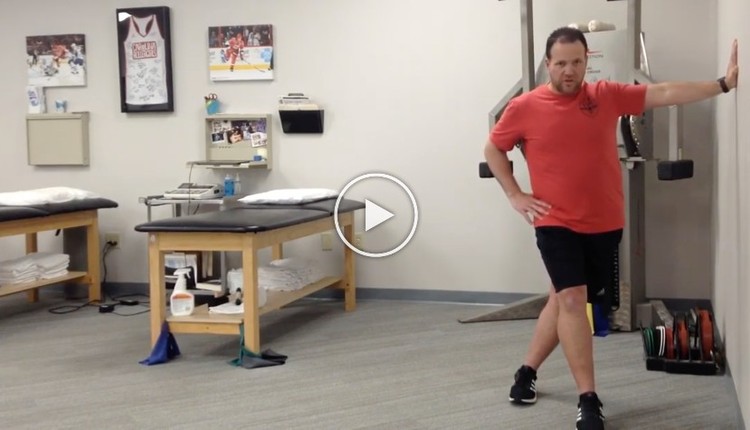Poor trunk and hip stability is common for athletes recovering from a lower extremity injury or surgery. The ability to maintain good pillar stability in a plank position in unilateral limb support is even more challenging. This particular exercise is an advanced progression utilizing an elastic band around the ankles to facilitate gluteus medius strength as well as better trunk control.

Execution: Place an elastic loop or mini-band around the ankles. Choose a lighter resistance for this exercise initially to minimize compensatory motion. Begin in a forearm plank with the feet at shoulder width. Next, slowly reach the left leg out and lightly tap the toes down through a small range of motion while working to keep a neutral spine. Return to the start position and repeat the same motion on the other leg. Continue for a specific amount of time or 10 repetitions on each leg.
Regression: decrease the resistance, move the bands up higher (beneath or just above the knees) or elect to remove the elastic band altogether
Progression: increase the level of resistance and determine the appropriate height of the band based on form
Application: This exercise is an effective way to improve hip abductor strength on the moving leg, while improving closed chain stability on the stationary leg. In addition, it trains the body to resist unwanted pelvic rotation and sustain trunk stability. This is a challenging exercise, and as demonstrated in my video, attaining a perfect neutral spine position can be difficult to achieve. This is where tactile and verbal cues are helpful to make small tweaks to form during the exercise. As fatigue sets in, it is common to see a loss of neutral spine (butt up or increased lumbar lordosis) as well as faster less controlled movement of the legs and hips.
Focusing on smaller leg movements is often an effective strategy to teach clients the value of resisting unwanted movement while encouraging proper mechanics. This exercise is effective for clients with patellofemoral pain, dynamic knee valgus, IT band syndrome, and poor hip/trunk stability. In addition, it is a ‘go to’ exercise I like to use in ACL prehab/rehab and with my runners struggling with inadequate single limb/pelvic stability.


